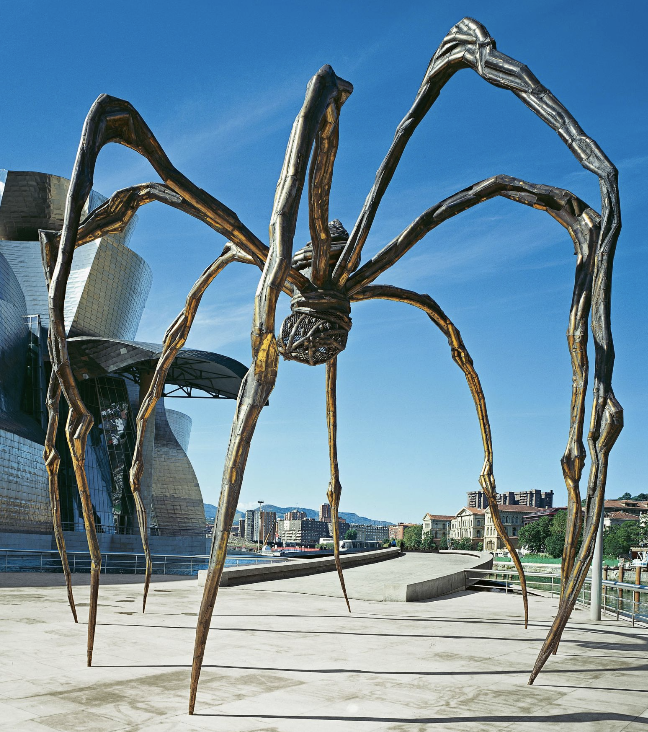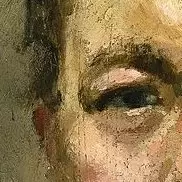Eva Hesse was hugely influential on the postminimalism art movement of the 60s, despite only being active for the 10 years before her death in 1970 from a brain tumor.
Postminimalism is recognizable by complexity and simplicity. The sculpture here at first appears simplistic, like a spider web or party streamers. But it is very complex with overlapping forms and depth. It also appears to be floating in air, unlike a spider web, not attached to anything.
Hesse’s work has been described as anti-form. Like the sculpture, while the stands all seem to be uniform in shape and size, their position in space is quite the opposite.
This chaotic mass could be influenced by her childhood, when at 8 her family fled Nazi Germany and immigrated to New York City. However, Hesse, like her works, was reluctant to give any concrete definition of any of her works, allowing them to speak for themselves.
Spiders in art often symbolize feminism and motherhood. The spider and her web are at the same time deadly and delicate. The web offers a safe place to nurture young, but deadly to intruders or prey. Her work has been praised at highlighting womens issues objectively without a political agenda.
With this in mind, the piece perhaps takes on an entirely different meaning - perhaps highlighting the beautiful chaos of life.
Other postminimalism works include this spider at the Guggenheim in Spain:

While the installation was created in 1999, there is perhaps a continuation from Hesse’s work.


That’s ok. Edit: What I mean is, that’s a valid argument. If it doesn’t speak to you, that’s ok. It spoke to me, filled me with a little dread when I first saw it - like it was made by a giant spider. And fear is a cool thing to get from a painting, I think. But if it doesn’t do anything for you, that just means we’ve had different life experiences, and ya know of course we have.
I think I understand what your saying. One that weirdly spoke to me is a painting know as Saturn devouring his son (yes it’s exactly what it sounds like, and yes it’s kinda fucked up). I don’t know why, but something about it just…captivates me. (For background context, the painting was created by a mad man and is one of 14 paintings known as the black paintings, which were literally painted onto walls and carefully peeled off) https://karantrichal.medium.com/goyas-painting-saturn-devouring-his-son-is-one-of-the-most-fascinating-works-of-visual-art-of-aa3cf671e32f
I have seen that one, and I agree. I didn’t know about the 14 black ones tho, thanks for the info.
Your welcome. All the others don’t have a clear story, but the commonality is a black goat (possibly satan) and famine, it would seem.